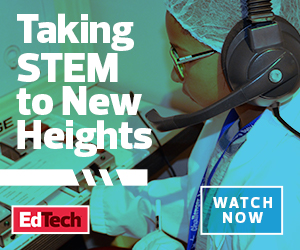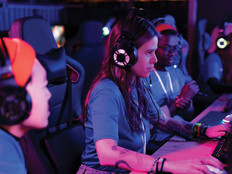Barriers to Employment for Students with Disabilities
Research shows that people with disabilities participate in the workforce at lower rates compared with those who identify as not having a disability. In 2019, the average unemployment rate for people with disabilities was 7.3 percent while the rate for those without was 3.5 percent, according to the U.S. Department of Labor’s Bureau of Labor Statistics.
That’s largely due to barriers such as the lack of education, training and accommodations on the job.
Schools do offer career and technical education (CTE) programs that help students with disabilities to prepare for employment and independent living. But even though those programs are mandated under the Individuals with Disabilities Education Act and the Americans with Disabilities Act, many still fail to offer the necessary support and accommodations for students with disabilities so they can access a diverse set of pathways to postsecondary success.
Experts say that if students with disabilities receive proper support, up to 90 percent of them are capable of graduating from high school and feeling ready to continue on to college or the workforce, according to The Hechinger Report.
Additionally, in a report titled, “Improving College and Career Readiness for Students with Disabilities,” the College and Career Readiness and Success Center notes:
“Every student, including those with disabilities, should have the option to make informed choices about the routes that they take in life and have high quality pathways available to better prepare them for success on those routes. Designing multiple pathways is increasingly proving to be an effective strategy in providing all students with alternative methods of instruction and support across a wide range of college and career preparatory content areas.”
With immersive technologies such as augmented and virtual reality, districts can create those pathways and nurture future-ready skills in students with disabilities.
MORE ON EDTECH: Learn how immersive technology champions the four C’s of learning.
Boosting CTE Programs with Immersive Technology
Immersive technology not only has the potential to transform classroom learning for students with disabilities, but it also can prepare them for the 21st-century workplace, thanks to virtual learning environments and simulations.
With extended reality, students can practice soft skills such as collaboration, teamwork and problem-solving in a safe, controlled space.
For example, applications such as Floreo allow students with autism spectrum disorder to build those skills and track their progress. Students at Danvers use it to practice social interactions and go through anxiety-inducing experiences. Although the lessons on Floreo aren’t specifically designed for CTE programs, they still guide students with autism through learning social behaviors, dealing with unexpected events, establishing a routine and regulating their sensory systems and emotions, which are all critical to college and career readiness.
VR platforms such as Virtual Speech and Speech Center VR can help learners with speech disabilities feel more confident during job interviews and presentations through role-playing scenarios. Both are compatible with numerous headsets such as the Oculus Rift and HTC Vive Focus, which eliminate distractions and allow students to focus.
Educational VR apps such as Google’s Tilt Brush and Anatomyou can also be adapted for CTE pathways such as the arts and healthcare. There are also VR experiences that can give students with disabilities hands-on training in specific fields such as STEM or design. Virtual field trips that use 360-degree video technology are also a low-cost, accessible option for students who need mobility assistance to take a peek into the world of the career they’re interested in.
While these immersive experiences can prepare students with special needs for future careers, it also gives them the freedom and agency to try out different pathways and discover new passions.










